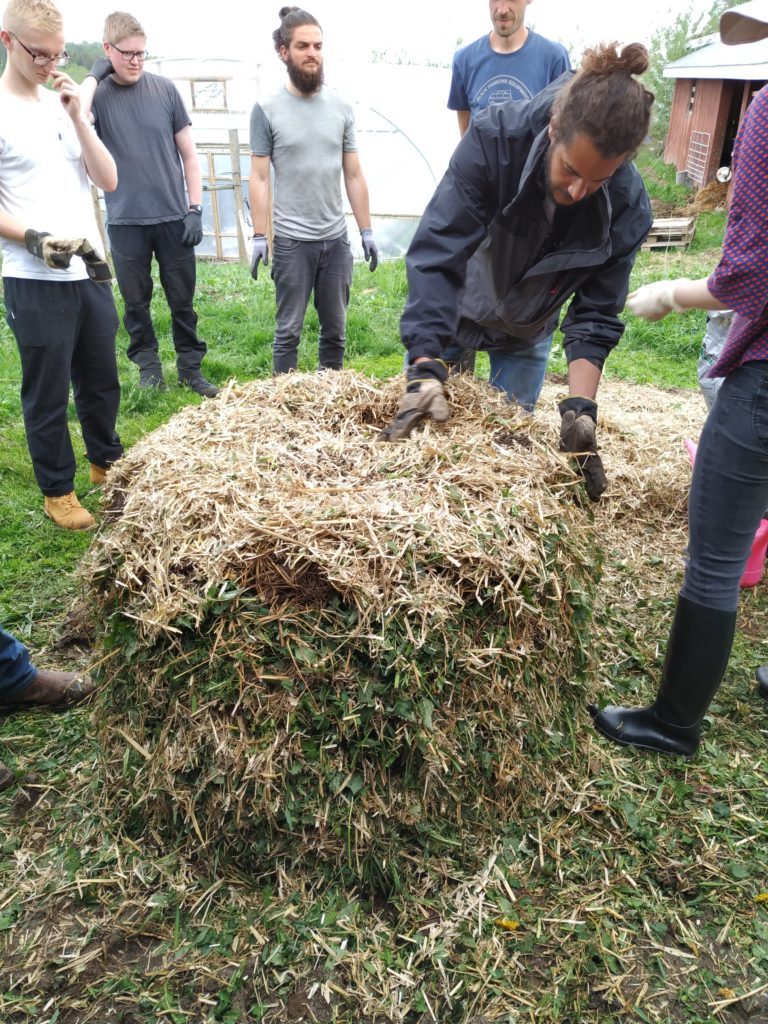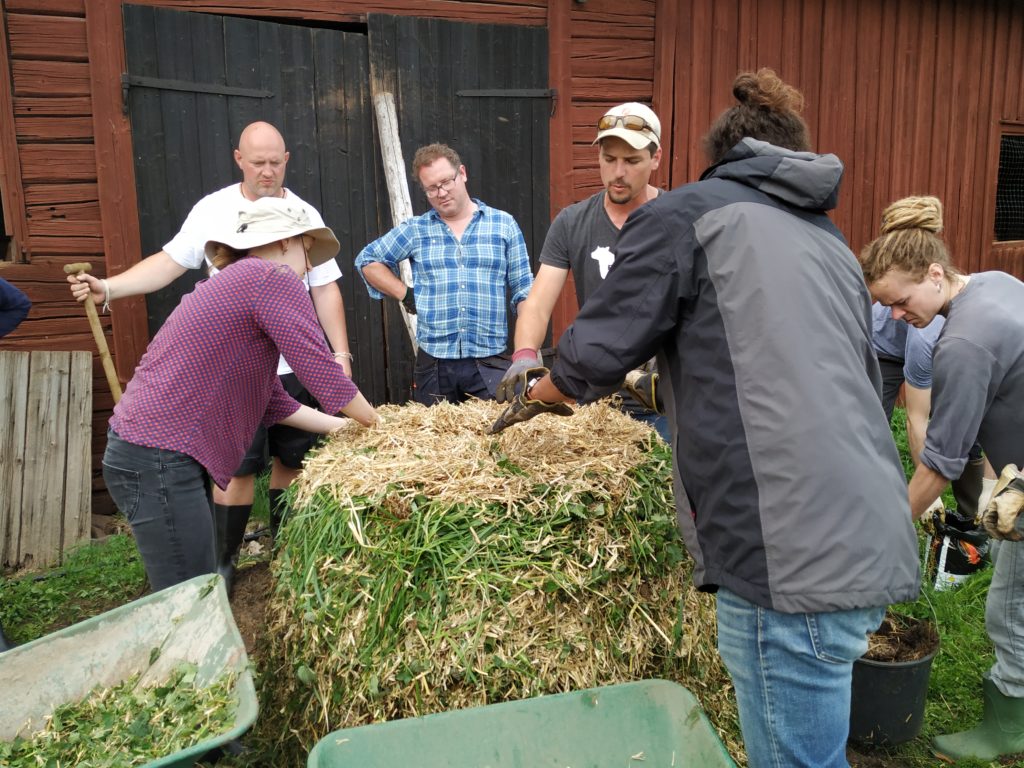Every day the participants rotate to a different area on the farm in order to split the chores. I was in the market gardens in the morning and we spread some more woodchip before breakfast.
Then in the morning Richard took us all on a farm tour and showed us around all the different fields. Most impressive was the difference between Ridgedale land and their neighbors land. When Richard and Yohanna arrived and bought the farm six years ago the grass was stunted in growth like it still is on their neighbors land. The reason it is stunted is that there is no more animal interaction with the land. The grass does not get grazed and can’t express it’s true physiology. We could see the grass was thin and there was a lot of dry dead grass matter in between the green grass with a layer of moss under that and very little soil activity.
On his land where Richard has been grazing cows and chickens and moving them after a grazing plan that let’s the grass recover it was about 30 cm tall and had thick dark green leaves. And the species of grass where all the same. Cows act as mowing machines and chickens follow them, flattening the grass which creates a shield that keeps moisture in the ground. The chickens also love to peck into the cowpats and eat the fly larvae, which are high in protein and would hatch to bug the cows otherwise. While foraging for larvae the chickens will scratch the cowpat with their feet spreading the manure evenly across the pasture. It’s a nice integrated system.
After lunch we whipped out the big straw chopper and chopped straw. A team collected cow manure of off the padocs and another team collected green matter and Richard showed us how to make compost. The chopper did a good job of chopping up the straw and green matter to create a bigger surface area. Then the material was layered in a cylindrical fashion with taking very good care of having straight edges.
First layer was a layer of straw (carbon material) which acts as a buffer for fluids seeping from the top. Then we added a layer green material (higher in nitrogen) and on top of that we spread out cow manure before putting on a layer of straw and so on. After each layer of straw we watered the pile since it was pretty dry material. It is important to keep the edges straight and work with your hands in order to get a feel for the right ratios in the compost.
Furthermore Richard pointed out that when the compost is finished half of its mass will consist of life (bacteria, nematodes, athropods, etc.) And the count of life will outnumber the number of humans that have ever lived on this planet so it is important to take care to make it a good process and take time.

Straight edges are very important 
The compost is a hot compost which we turn often because the middle part heats up to about 55-65°C and that is what degenerates the material and kills of any pathogens or weed seeds. So we are going to take the outside part and layer it in the middle and take the middle and put it on the outside about every two days depending on the temperature.
It was nice to do on the first day since that way the people that are here for the PDC and leave after ten days can still see the most change in the compost. And we interns get to use it later and even make compost tea from it which I am really excited about.
